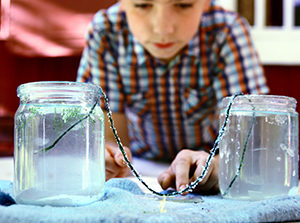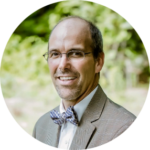![]()
 The Christian school of today has to be both strategic and creative in terms of defining, delivering, documenting, and refining the learning program. Christian schools historically put strong emphasis on a core-knowledge approach—protecting a high quality, God-honoring, knowledge-based curriculum. As the educational establishment is always searching for the new and vogue method to educate, Christian schools can remain distinctive and even counter-cultural by holding onto a timeless knowledge curriculum. That being said, each Christian school holds the burden of creating programs that will be unique, relevant, and forward-thinking. Project-based learning is such an approach to teaching and learning.
The Christian school of today has to be both strategic and creative in terms of defining, delivering, documenting, and refining the learning program. Christian schools historically put strong emphasis on a core-knowledge approach—protecting a high quality, God-honoring, knowledge-based curriculum. As the educational establishment is always searching for the new and vogue method to educate, Christian schools can remain distinctive and even counter-cultural by holding onto a timeless knowledge curriculum. That being said, each Christian school holds the burden of creating programs that will be unique, relevant, and forward-thinking. Project-based learning is such an approach to teaching and learning.
History of Project-based Learning at Jesse Remington High School
Jesse Remington High School (JRHS) is a rural school, located in the small town of Candia, New Hampshire. The school is designed around a discipleship model, operating optimally with an enrollment of 50 students, grades 9–12. This allows the faculty to work closely with each student and serve as mentors to maturing young Christians. JRHS was founded on the principles of community, excellence, and leadership. Project-based learning (PBL), which has been part of the program since its inception in 1992, offers students learning experiences that include yet surpass traditional learning models, as it effectively builds both academic and life skills in students.
PBL, as defined and developed at Jesse Remington High School, starts from two premises: (1) that good teaching is diverse in its delivery, expectations, and format; and (2) good teaching recognizes God’s varied creation, commonly manifested in learning styles. PBL is an effort to recognize that all students are created by God with unique gifts and talents and that a learning program beyond books and paper is apt to reach a student at least differently or perhaps better. PBL will allow for diverse modes of delivery as learning becomes more active, touching real-life skills.
At JRHS, the theoretical root for PBL goes back into the literature of the ’80s, generally under the banner of alternative assessment, learning styles, and school reform. I am the originator of PBL in our school, and authors that informed our program included Howard Gardner (Multiple Intelligences), Theodore Sizer (Horace’s Compromise and the principles within his Coalition of Essential Schools), and Grant Wiggins (years of ACSD writings and principles within his Authentic Education). Today, our practice is directly informed by the emphasis on Expected Student Outcomes (ESOs), by organizations such as the Association of Christian Schools International and the New England Association of Schools and Colleges. Secondly, the newer Wiggins/McTighe material, “Understanding by Design,” offers much in the realm of performance assessment.
What PBL Looks Like at JRHS
All forms of alternative learning models have multiple expressions or names. Fundamentally, educational leaders have to decide if the form under consideration is going to be an inner classroom approach, an interdisciplinary approach, or an out-of-classroom approach. What sometimes surprises people is that at JRHS, we make no effort to incorporate PBL principles into the traditional classroom. In our setting, all effort in this regard is in addition to the core knowledge curriculum. This can best be seen by looking at the daily schedule. Students take their traditional classes for an estimated two-thirds of the time allotted in a week, and PBL is therefore scheduled for approximately one-third of the time, generally in the afternoons.
Students enroll in up to five projects per year (four quarters and a January term). Our goal is that the projects offered each year span the gamut of disciplines—humanities, arts, sciences, ministry, outdoors, etc. For a small school like JRHS, this can be quite the resource and logistics challenge, especially considering most classroom teachers are also project teachers.
Although not all projects meet this standard, the Gold Medal Criteria for a good project include:
- A small-group experience (10 or fewer students) laden with challenge
- A confined overall time frame to accomplish (6–8 weeks), and adequate time each week to progress (normally two sessions of an hour-and-a-half each; some require additional sessions)
- A qualified expert or practitioner who is also a mentor for students
- Requires life skills that are broadly applicable in multiple situations
- Culminates or concludes with a public component
The name, outcomes, resources, and delivery of a project are unique to the setting and ethos of the school and team. Projects at JRHS tend to match our northern location and take full advantage of the rural campus we have and a parent constituency characterized by approximate equal numbers of working-class and business-class families. Examples that define us include Botany, The Humanities Faire, Outdoor Education, Stained Glass, CAD, Mock Trial, Maple Sugaring, and more. Each year, we offer somewhere in the range of 12–16 different projects.
Some of the most important outcomes of a project include creativity, collaboration, time and deadline management, resource allocation, and a myriad of other skills transferable to larger life. Each year the faculty decides what projects are working the best, and which ones need to be retired or renewed. One project has stood the test of time year after year and now stands as a hallmark example of PBL: the Humanities Faire. The annual fall Humanities Faire is a three-day roleplaying event set in a historic era that the students create over the first six or seven weeks of school.
Student Learning and Outcomes
Structuring and evaluating a project has proven to be the key for us in moving a project from a “fun” or “good” experience into the arena of a meaningful educational pursuit that offers short- and long-term benefits. Some of this flows back into the academic arena (botany students identify, collect, and codify dozens of samples), but more importantly, into the possibility of forming minds, hearts, and bodies that are broadly and diversely skilled and capable. PBL offers the teacher an interactive, hands-on, task-focused challenge through which to guide students.
We have recently gotten behind the banner of Expected Student Outcomes (ESOs) as the bridge crossing over from projects that are “good experiences” to framing them as greater “educational value.” This will be the 26th year of our PBL program, and in the last three years, we have honed all projects around outcomes. This transition has taken quite a bit of work, but in the end, we had to drop very few projects and were able to readily reframe the ones we kept around profitable and worthwhile ESOs. For our faculty, students, parents, and ministry partners of all kinds, we have been able to shift our thinking in the direction of meaningful skills, traits, and outcomes that are found within each project.
Each project carries what we term global and specific ESOs. In addition to scoring students in these predetermined areas, faculty are also responsible to register a “day score” at the conclusion of each class. In some cases, teachers include the students in establishing the day score. The day score is a reflection of consistent effort, positive attitude, and participation. ESOs are carefully worked out by the team of PBL teachers and are presented to students on day one of the projects, and become the evaluation discussion throughout the duration of the project.
In our work, a global ESO has universal, transferable characteristics to life at large, another project, an academic class, college, career, ministry, or family. In essence, a global ESO can be viewed as an attribute of successful living. Specific ESOs are skills, habits, or behaviors unique to the specific project task(s) that, if pursued with diligence, will lead to mastery.
This year, we are working to organize all of our global ESOs around the common categories of project management, team collaboration, personnel management, and life skills. We are working with each teacher to write broad and prescriptive ESO statements that fit the varying projects under these headings. The goal is that students will learn to see how projects as varied as bridge design, choir and ensemble, or book-making all lead them toward a common end. The specific ESOs are unique to each project, and they, too, follow a similar language: “The student will be able to demonstrate, design, use, increase, and produce …” From these five ESOs, students can see the new things they are learning and experiencing.
PBL as a Part of an Integrated Whole
At JRHS, a project is not an end in itself, but merely forms part of the overall learning program at our school. I mention this because there is a tendency in the realm of alternative assessment to sideline good, solid, and worthwhile content learning in the name of “experiential learning.” Toward this point, we have been careful to never let PBL define the total program of our school, and we work hard to instill in our families that learning at JRHS is a “both-and” proposition, meaning they will work hard in both the academic and the hands-on domains. PBL is an important pedagogy that enables JRHS—despite the challenges of being both a small and rural school—to foster in students the holistic outcomes of a biblically-based, rigorous, and life-shaping Christian education.
About the Author
 Jeffrey Philbrick is the founder and current headmaster of Jesse Remington High School, where he is actively engaged in the daily life at the school. In addition to school leadership, Jeff also prioritizes teaching one humanities class per year and leading or co-leading some of the offerings in the Project Based Learning Program. He can be reached via email at jphilbrick@jrhs.org.
Jeffrey Philbrick is the founder and current headmaster of Jesse Remington High School, where he is actively engaged in the daily life at the school. In addition to school leadership, Jeff also prioritizes teaching one humanities class per year and leading or co-leading some of the offerings in the Project Based Learning Program. He can be reached via email at jphilbrick@jrhs.org.

